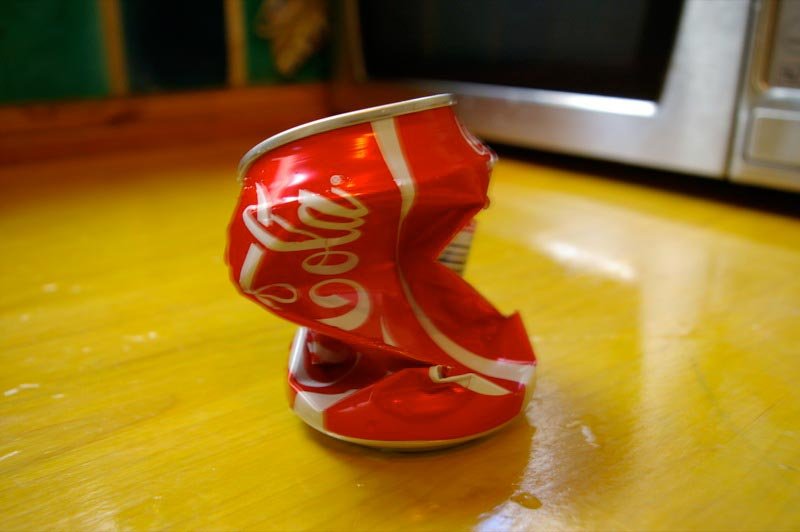Experiment with the wonders of pressure and condensation by crushing a soda can with nothing but air and water!

What You Need:
❑ Empty soda can with tab removed
❑ Ice water
❑ Pan
❑ Mixing bowl
❑ Tongs
❑ Stove
Caution! Experiment involves heat and boiling water, adult supervision required.
What You Do:
- Rinse the soda can; then place a couple tablespoonfuls of water inside it – just enough to cover the bottom of the can.
- Place the can directly in a pan (use an old pan if you are worried about any damage caused by heating the can) and place on a stovetop burner. Turn the burner to medium-high heat. Allow the water in the can to heat.
- Fill the mixing bowl with about two inches of ice water.
- Once the water in the can is boiling (steam will be coming out of the can and you should be able to hear the “popping” sound of boiling water), use the tongs to remove the can from the pan and quickly (without splashing boiling water!) bring the can to the bowl of water; turn it upside down, and immerse the can in the cold water. The can should quickly be “crushed” by the cold water!
- Still holding the can with the tongs, pull the can out of the water and observe how much water pours out of the can.
- Tip: If the can doesn’t crunch on the first attempt, repeat the experiment. Consider using a different can, placing less water in the can, making sure the water in the bowl is very cold, or heating the can in pan longer.
Challenge your child to explain why the can was crushed. If he mentions pressure and/or condensation, he is off to a great start! Here’s what happened:
Boiling the water in the can decreases the air pressure inside, creating a partial vacuum. The water vapour produced by boiling the water pushes air out of the can, creating a lower pressure system inside the can. Immersing the can in the cold water causes the can to implode because the pressure exerted by the water and air outside the can is greater then the pressure inside the can.
Condensation also occurs when the water vapour inside the can (a gas) quickly cools when the can is immersed in the cold water. The water vapour rapidly condenses and turns the water vapour into liquid water again. The molecules of the liquid water droplets take up less space inside the can than the molecules of the gaseous water vapour, once again causing the can to be crushed by the greater external pressure exerted by the water in the bowl and air pressure around the can.
Hopefully your child observed that more water came out of the can than was originally placed inside. The extra water was forced into the can as a result of the greater air pressure outside the can.

